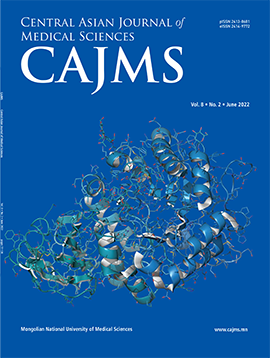Current Situation of Anemia Management among Hemodialysis Patients in Mongolia
DOI:
https://doi.org/10.24079/cajms.2020.03.002Keywords:
Anemia, Chronic kidney disease, Dialysis, Erythropoietin, Iron statusAbstract
Objectives: The purpose of our study was to determine the current practice of anemia management prevalent among hemodialysis patients in Mongolia. Furthermore, we assessed the appropriateness of anemia management by comparing the observed practice to evidence-based clinical guidelines. Methods: A survey was conducted on 132 patients undergoing hemodialysis in State First Hospital, State Third Hospital, ICU Dialysis Center, and Intermed Hospital. All patients who were over 18 years of age with ESRD undergoing hemodialysis were included. Patients were excluded if they had cancer, were receiving chemotherapy or radiotherapy, or undergoing dialysis less than three times per week. Data on anemia parameters, erythropoietin dosing, iron supplementation, in addition to demographic data, were collected. The data were collected over a one year retrospectively from January 1 to December 31, 2018. Patients were assessed according to a pre-specified protocol. Results: Data were collected from 132 patients. The mean Hgb value for those patients was 10.31 ± 1.59 g/dL. Seventy-four patients (56.1%) had mean Hgb values between 9.5 and 11.5 g/dL, the target range recommended by KDIGO guidelines. The mean weekly prescribed dose of erythropoietin was 3825 ± 5054 IU/week (57 ± 72 IU/kg/week). Information on ferritin concentrations was available for 32 (24.2%) patients. The median serum ferritin concentration for those patients was 95.41 ng/mL (IQR=40.83 - 259.27). None of the patients had transferrin saturation (TSAT) values recorded. Conclusion: There is an opportunity to improve anemia management in hemodialysis patients in Mongolia through the evaluation of secondary causes of low response to erythropoietin and better monitoring and management of iron status.
Downloads
242
Downloads
Published
How to Cite
Issue
Section
License
Copyright (c) 2020 Mongolian National University of Medical Sciences

This work is licensed under a Creative Commons Attribution-NonCommercial 4.0 International License.




